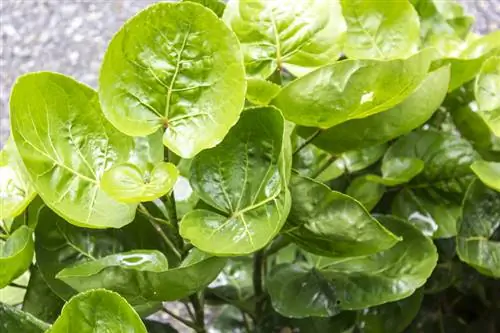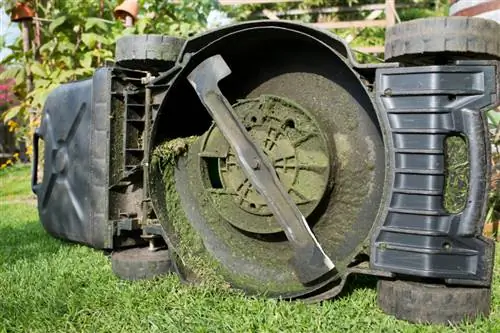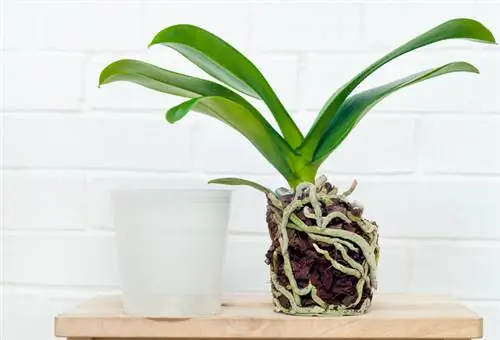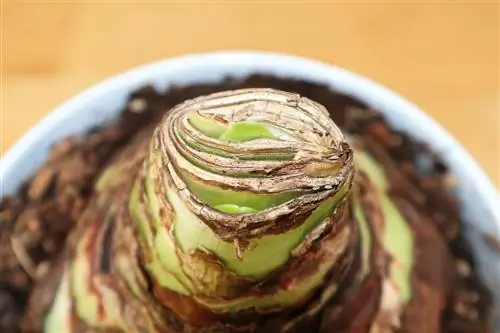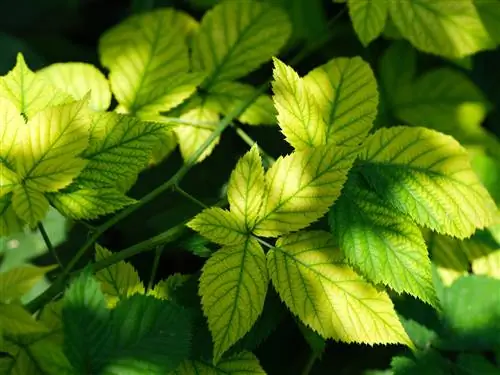- Author admin [email protected].
- Public 2024-02-02 01:04.
- Last modified 2025-01-23 11:19.
Yellow leaves suddenly appear on the hibiscus. This could be due to a care error or a plant disease. With just a few resources, the right care and a little patience you can quickly spice up the garden marshmallow or rose marshmallow.

Why does my hibiscus have yellow leaves?
Yellow leaves on hibiscus can be caused by care errors, drought, older leaves, change of location, pest infestation, chlorosis or yellow spot disease. Depending on the cause, you should adjust the location, optimize irrigation, remove affected leaves or use a suitable fertilizer.
Possible causes of yellow leaves
- Care errors
- drought
- older and withered leaves
- Change location
- Pest infestation, e.g. with spider mites
- Chlorosis
- Yellow spot disease
Chlorosis
An extensive yellowing of the leaves can indicate chlorosis. The causes of chlorosis are often a lack of nutrients and a location that is too dark and too cool.
It's better to choose a bright location for the Hibiscus rosa sinensis, for example on the windowsill, but not necessarily in the south-facing window. In winter, during the rest period, temperatures of 12 - 14°C are appropriate; in summer the hibiscus can also be kept warmer. You supply the plant with sufficient nutrients via a suitable liquid fertilizer (€9.00 on Amazon).
Use compost or liquid fertilizer to give your garden hibiscus the nutrients it needs. However, the garden shrub is not easy to move and may need to be moved to a sunnier location.
Yellow spot disease
If the entire leaf is not yellow but only has individual yellow spots, your hibiscus is affected by yellow spot disease. This is a viral disease that you need to take action against as quickly as possible. The virus not only damages the affected hibiscus, it can also quickly spread to other plants.
The affected hibiscus must be placed individually. Remove affected leaves and dispose of them with the trash. Please do not add to the compost to avoid spreading the virus.
First aid for care errors
It doesn't necessarily have to be a disease if the leaves of the hibiscus turn yellow. He often wants to draw attention to proper care.
-
Hibiscus doesn't like drought at all. Then its leaves lose their color, droop and eventually fall off. So when it's dry, water, water, water.
- However, you shouldn't water it too much. To avoid waterlogging, watering should only be done again when the top soil has dried out. Any excess water in the planter or saucer is poured off. If rotting roots have already formed, cut them back and repot the hibiscus.
- Yellow leaves often form on over-aged shoots. Annual pruning can help here.
- Spider mites often attack hibiscus when the air is too dry. Regular ventilation, collection and hosing down with soapy water can help here.
- Frequent change of location stresses the indoor hibiscus. It reacts by dropping its buds
and turning its leaves yellow. It is better to put it in a suitable location from the start.

